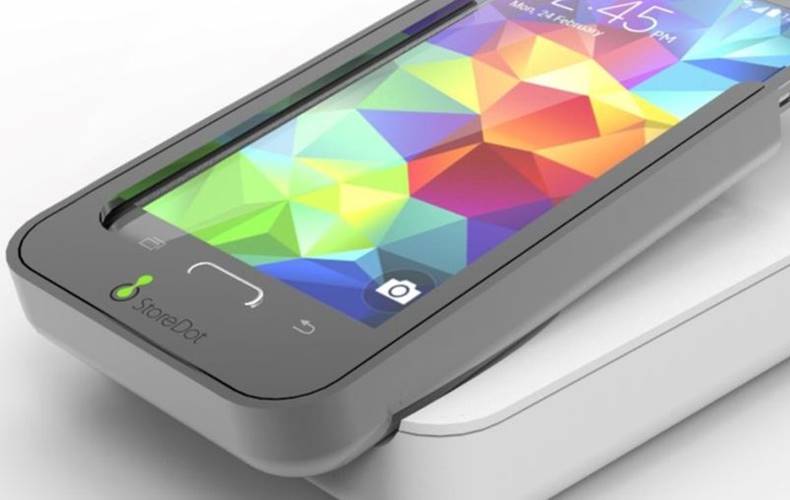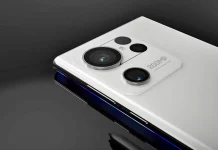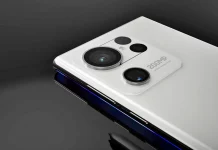Smartphones that charge in just 5 minutes would be the real achievement for the world of mobile terminals, and in 2018 they should reach the market. The technology was initially presented in 2015 by an Israeli company, and during the next year it would be prepared for implementation in smartphones whose manufacturers will accept it.
StoreDot is the name of the company that developed these revolutionary batteries, FlashBattery being their name, the president of the company announcing that their production will begin in 2018. Some smartphone manufacturers have already ordered these types of batteries from the Israeli company, but of course not at the moment their names were revealed.
The Israeli company claims that the technology is based on a much faster transfer of ions, so charging can be done at an incredibly high speed. A lot of people will definitely wonder what longevity these batteries will have, but the Israeli manufacturers assure the world that it is no different from the current batteries.
At the moment, various Asian battery manufacturers are trying to produce the new battery model on a small scale in order to initiate mass production. If everything goes smoothly, then the first smartphones that charge in 5 minutes will be launched in 2018 and it will be interesting to see which manufacturer will implement the technology.
At the moment, Qualcomm QuickCharge 4 offers several hours of autonomy after 5 minutes of charging, but StoreDot proposes a full charge in 5 minutes. The company has also developed a car battery that charges in 5 minutes and offers an autonomy of 480 KM, which could revolutionize electric cars as we know them today.
"We will charge a smartphone in five minutes. He added that the technology was in pilot production at two Asian battery makers and that "mass production" was expected to begin in the first quarter of 2018."


















Prin 2025 o sa ajunga si in Iphone. Atunci va fi tehnologia matură.
da, pana in 2025 lasam samsungul sa bubuie destul pana se maturizeaza tehnologia
Ce tare, Srb…
Tare răsuflată glumă, într-adevăr. Unii nu au capacitatea de a înțelege că ce a fost, dus rămâne, și că învingătorii învață din greșeli.
ce se ataca pt o gluma rasuflata…iti place si tie hihihi
Ce te face să crezi că s-ar încălzi?
Este altă tehnologie, Radu.
Prin vechea tehnologie, încărcarea se face printr-o singură poartă de intrare, iar prinl noile tehnologii, bateria se încarcă prin mai multe porți de intrare.
Imaginează-ți o soluție de transport a autovehiculelor între două orașe.
1. Șoseaua cu un singur sens este o soluție, dar dacă vei dubla, tripla, sau multiplica de 8 ori afluxul de mașini în viitor, e clar că o șosea cu o singură bandă pe rulare pe sens va deveni super aglomerată și se va “încălzi” de atâtea tamponări.
2. Autostradă cu 8 benzi pe sens este o soluție mai bună pentru că deși afluxul de mașini crește de 8 ori față de cel inițial, se va circula în continuare lejer.
Aveți și voi încredere în ceea ce produc companiile astea… Cercetătorii lor lucrează mii, zeci de mii de ore pentru dezvoltarea tehnologiilor, și este super clar că se gândesc la toate lucrurile astea.
Pai in cazul incarcarii, exemplul cu autostrada se refera la capacitatea de lucru, nu la alte efecte negative de genul poluarii :)))))
Alt exemplu ar fi cu transportul apei pe sistemul de canalizare. Fie cresti presiunea in tevi (si se pot sparge, defecta, etc), fie cresti diametrul tevilor de transport, si nu se suprasolicita sistemul.
Incarcarea rapida este dependenta de procesorul dispozitivului. Pur si simplu, este vorba despre tehnologii care noua, muritorilor de rand, ni se par SF curat. Ceea ce am vrut eu sa subliniez in comentariul anterior este faptul ca incarcarea rapida nu inseamna mai mult curent bagat cu forta pe aceasi conducta.